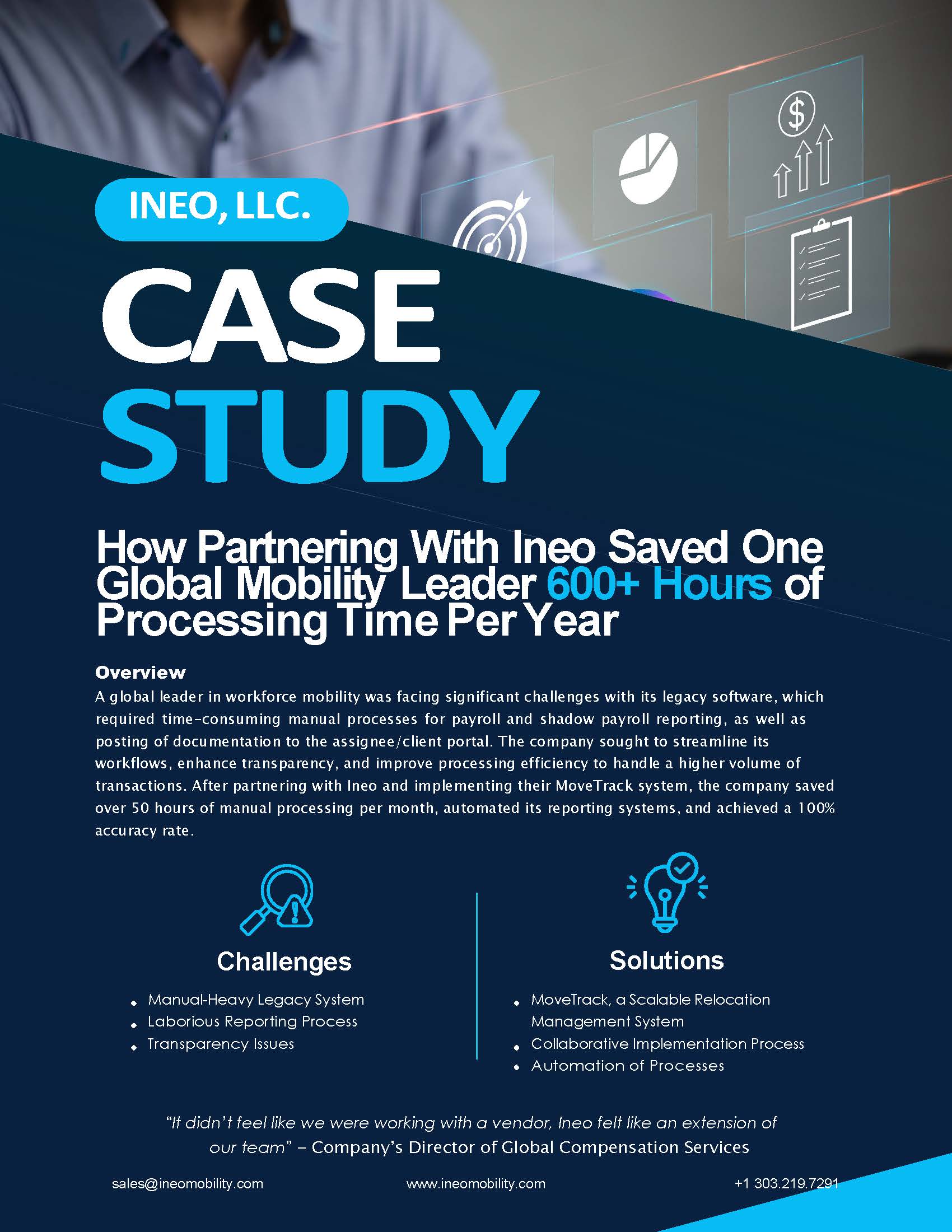The 5 Ps of Developing a Global Mobility Policy During a Volatile Economy

This decade has already seen more than its fair share of economic headwinds that continue to challenge businesses, whether they be global enterprises with tens of thousands of employees or small mom-and-pop storefronts on Main Street.
Probably the most significant economic challenge any of us faced in our lifetimes came from the global pandemic that began in early 2020. It forced seismic changes in how and where we conduct business by accelerating digital adoption and transforming entire industries ranging from healthcare to fitness. Who hasn’t participated in at least one online workout or yoga session, not to mention countless Zoom and Teams meetings, in the last couple of years?
Not to belabor the pandemic’s impact any further than we have to, one can make a case that an outcome of the pandemic’s whipsaw effect on the economy is the current volatile economy we find ourselves in today: a slow-burn recession combined with blistering inflation.
In other words, with the pandemic ‘officially’ over, we now have to address how we can effectively manage the effects of a highly unpredictable economy.
Spikes in airfare due to an under-resourced airline industry, fluctuations in global currencies caused by fast-changing economic conditions, slower revenue growth compared to a pandemic-fueled buying frenzy driven by consumers who found themselves working remotely with time on their hands – there’s never been a better time to make sure your enterprise has a well-developed global mobility policy in place.
Fortunately, we’re here to help!
We’ve put together several high-level tips on developing a policy as you seek to tame the uncertainty facing your company.
Plan
If you’re tasked with developing a global mobility policy, you’re undoubtedly involved in big-picture items such as mobility budget, team staffing, and strategic planning. The key here is to do your best to plan for your company’s needs in the coming months, quarters, and fiscal years. That may include translating your company’s larger strategic plans – new offices, manufacturing expansions, and more – into how much need there will be for global hiring and staffing assignments. For example, suppose the company plans to shift manufacturing from China to India, as Apple recently did for its iPhone lines. In that case, that will necessitate a complete change in hiring and relocation requirements.
Purpose
Once you have a solid understanding of the company’s needs and you have the beginnings of a plan, don’t forget to address the purpose of your global mobility policy: balancing employee needs with the financial and operational needs of your company. If growth in a key international market is desirable, finding local and international talent to support that growth will be a priority. Your policy will need to focus on ensuring that employees are appropriately supported through every phase of their international assignment, because if it doesn’t you’ll risk decreasing productivity, lowering employee morale, and losing candidates for future global assignments.
Place
Where you end up placing your employees will drive a large portion of your policy. As such, identify your locations and reverse engineer the process to address tax compliance, housing costs, educational options for kids and spouses, immigration laws, internal support services, and more. These factors will almost certainly impact your policy and ultimately help define your global mobility program.
Process
This is where the rubber meets the road for your global mobility policy. In looking at high-priority locations that meet your company’s future needs, you should focus on the needs of employees, their families, and the details of a future global mobility program.
Be sure that you have a strong understanding of who your target employee audience is: management (or not) levels, countries of origin, family demographics, etc. This will help you refine the plan and process you ultimately build out. Based on how you define your target employee audience, you should be able to address some of the following items for your policy: immigration support, travel and relocation needs, spousal support, family educational requirements, language and cultural integration training, insurance (health and life), mental health, and much more.
Pulse
During unpredictable times, it’s wise to keep your fingers on the pulse of your company’s global mobility program and how well it’s serving the needs of both employees and executive leadership. Consider running an informal poll – or pay for a formal one that’s anonymous to ensure complete honesty – to determine where your program is falling short and where it’s succeeding brilliantly.
Keep your fingers on the economy’s pulse and look for early indicators about how your executive leadership plans to deal with ever-changing business conditions.
James Carville coined the phrase “It’s the economy, stupid” during Bill Clinton’s first presidential campaign, and senior executives at large multinational corporations are undoubtedly heeding that adage today. In a volatile economy like the one we’re experiencing now, it’s best to pay close attention to early indicators from executives. In other words, don’t be surprised if you have to devise Plan Bs and Cs for your global mobility program to make pivots that maximize a company’s operational and financial performance.
Your ultimate resource in global mobility software solutions
A well-developed global mobility policy is only as good as your international mobility software — that’s where Ineo comes in. From assignment management tools to cost estimates and more, our robust global mobility software solutions have you covered.
Contact our global mobility industry experts today to learn how our software solutions can help you build a better mobility program.
Global Mobility Resources
Learn more about what’s going on at Ineo and insights into the complex world of global mobility from the industry’s top thought leaders and innovators.
Request A Demo
Whether you are new to the world of global mobility or you’ve been in the business for a while, Ineo is here to assist you.
The best way to learn how Ineo’s global mobility software can help your company revolutionize your global mobility program and support your business strategy is to see it in a demo.
Fill out this form to get started today.
Get Started

